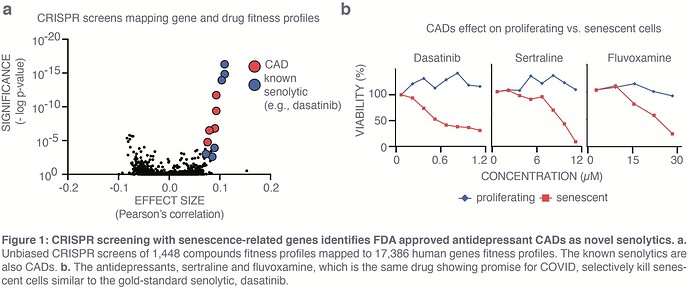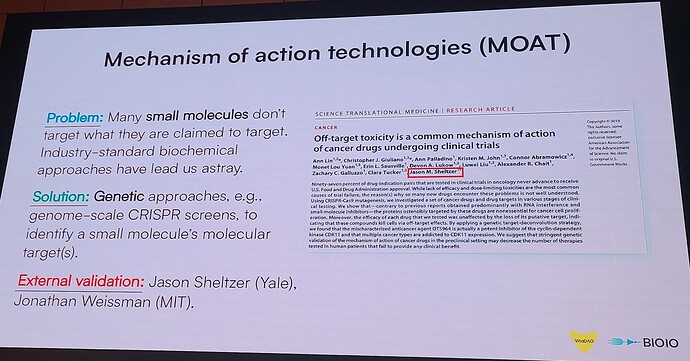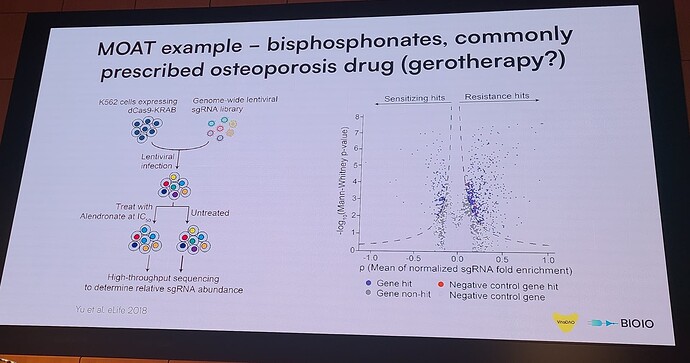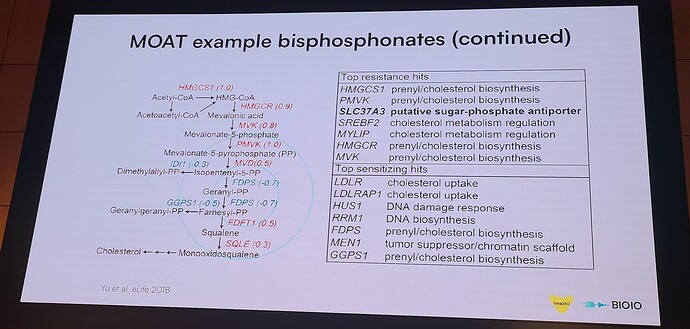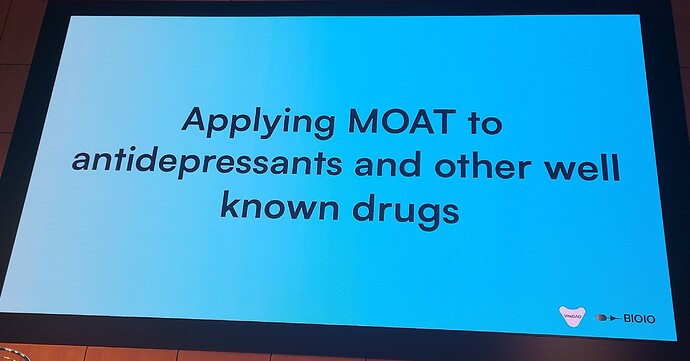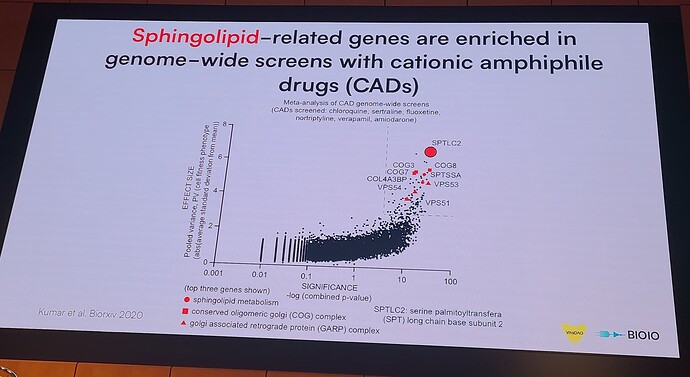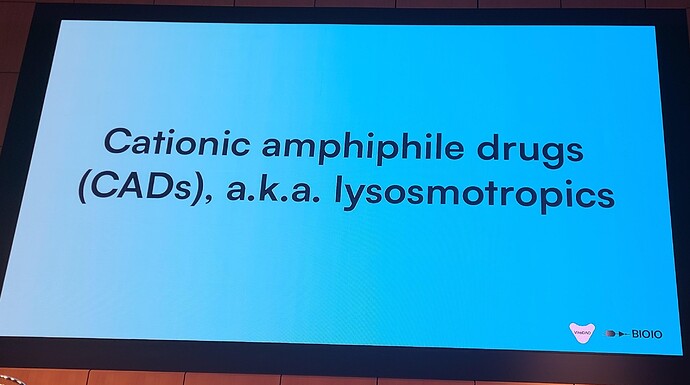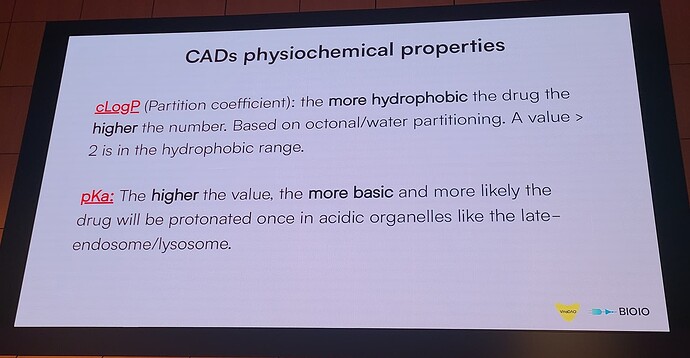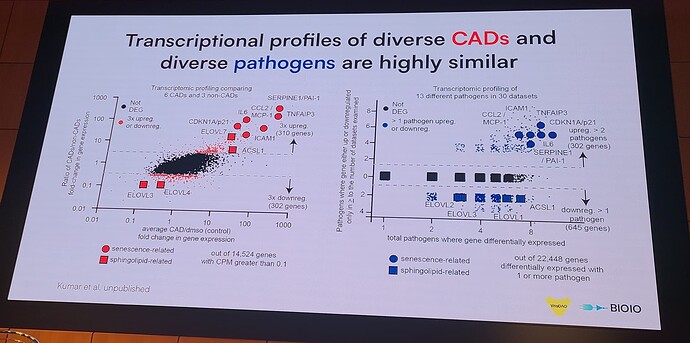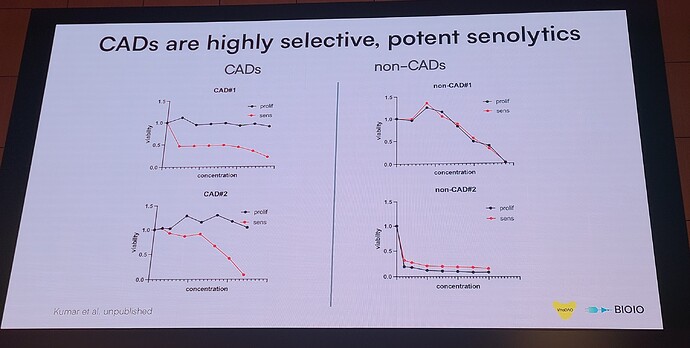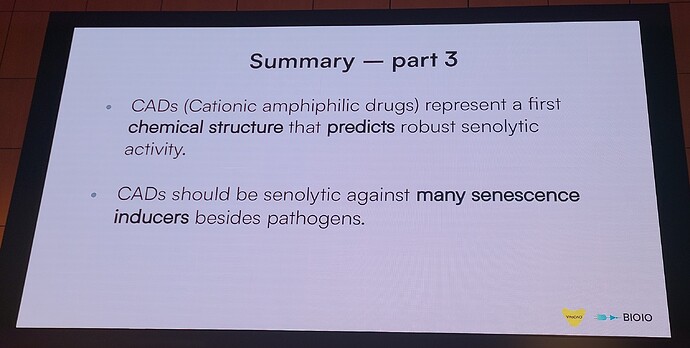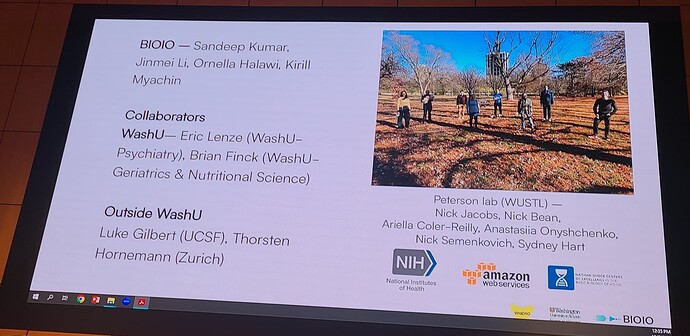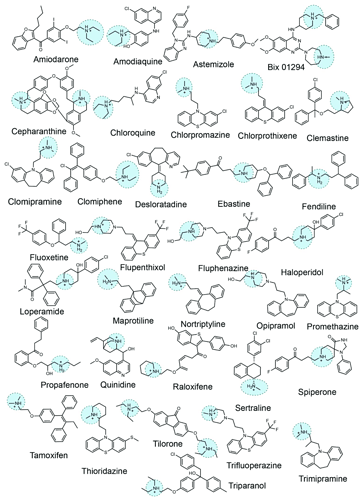So - we may have a few more candidates for senolytic drugs that people can test for topical application for skin (since it seems much more safe to do this, than to be using them orally, until more testing).
Strong potential senolytics that I’m thinking of adding to my Senolytic skin cream include:
- Sertraline
- Fluvoxamine
- Nortriptyline
- Verapamil
- Amiodarone
At the Longevity Summit at the Buck Center in December, Tim Peterson presented on his group’s work on senolytics. Tim is very focused on the longevity space, and did work in the Sabatini Lab working on mTOR.
It seems that there is a class of drugs that can be identified as “cationic amphiphilic drugs” that seem to be powerful senolytics. Many of these are generic psychiatric drugs (@DrM ) that are inexpensive and widely available (from US or Indian pharmacies, etc). I may try adding these to my planned senolytic skin cream that I’m going to create with Dasatinib in it, similar to how we’ve created the DIY rapamycin skin cream. Comments back from people who are knowledgeable about these drugs greatly appreciated.
Their project, described on Tim Peterson’s Lab website: https://timrpeterson.wustl.edu
Is as follows:
Senolytics are a powerful new class of longevity therapeutic.
They selectively kill disease-causing senescent cells that accumulate in our bodies as we age. In this project we will test a class of drugs we identified called cationic amphipathic drugs (CADs) that we’ve shown in preliminary studies to have powerful senolytic activity. Based on the drugs’ chemistry we propose this class acts like an intracellular soap to ‘clean out’ these ‘old’ senescent cells from the body. Because many of the drugs we’re testing are already in use in humans and are inexpensive, and we will make our results publicly available, our goal is to accelerate the longevity field by providing immediately useful therapies.
More details on the Open Senolytics program: Open Senolytics
Who is the team behind Open Senolytics?
Our team is led by Tim Peterson, Ph.D. and Sandeep Kumar, Ph.D. Dr. Peterson is an Assistant Professor at Washington University School of Medicine in St. Louis in the Departments of Medicine and Genetics. “WashU” is a perennially top five medical school in the U.S. in terms of publishing and funding. Dr. Peterson did his Ph.D. at MIT where he published multiple papers in Nature, Science, and Cell journal on one of the major aging pathways, mTOR, and the drug, rapamycin, that targets it. Dr. Peterson did his postdoctoral fellowship at Harvard University where he continued his work on longevity drug mechanisms focusing on the most commonly used drugs for osteoporosis, bisphosphonates and diabetes, metformin. Dr. Kumar similarly has a deep background in aging research most notably performing several seminal lifespan studies in worms.
Dr. Morten Scheibye-Knudsen at the University of Copenhagen will be assisting us with his AI-driven senescent cell detection algorithms (see below). These algorithms are helpful because they allow us much greater throughput in our experiments. Thus, we can test many more CADs.
A sample of some of the slides that Tim presented are below:
Substances with antihistamine and cationic amphiphilic characteristics, with potential (or confirmed) anti-SARS-CoV-2 activity
Source: https://www.ncbi.nlm.nih.gov/pmc/articles/PMC7830196/table/t0005/?report=objectonly
Paper Source: https://www.ncbi.nlm.nih.gov/pmc/articles/PMC7830196/
| Psychotropics with antihistamine and cationic amphiphilic properties and potential anti-SARS-CoV-2 activity (FIASMAs +/−) |
Preliminary data confirming anti-SARS-CoV-2 activity |
| Alimemazine/trimeprazine (−‡) |
[13] |
| Amitriptyline (+) |
[8] |
| Astemizole (+) |
|
| Benz(a)tropine (+) |
[18] |
| Cetirizine (−) |
|
| Chlorphenoxamine (−) |
|
| Chlorpromazine (+) |
[16], [18], [19] |
| Citalopram* (−) |
|
| Clomipramine (+) |
[19] |
| Clozapine (−) |
† |
| Cyamemazine (−‡) |
|
| Escitalopram* (−) |
[8] |
| Flupent(h)ixol (+) |
[13] |
| Fluphenazine (+) |
[19] |
| Fluspirilene*(−#) |
[19] |
| Hydroxyzine (+) |
[17] |
| Levomepromazine/methotrimeprazine (−‡) |
|
| Mequitazine (−‡) |
|
| Metopimazine (−‡) |
|
| Penfluridol* (+) |
|
| Pimozide* (+) |
[21] |
| Pipamperone*(−) |
|
| Pipotiazine (−‡) |
|
| Promethazine (+) |
[19] |
| Perici(y)azine/propericiazine (−‡) |
|
| Quetiapine (−) |
|
| Tiethylperazine (−‡) |
[19] |
| Tiotixene (−‡) |
|
| Triflupromazine (+) |
|
| Zuclopenthixol (−‡) |
|
Representative examples of cationic amphiphilic drugs that are identified in SARS-CoV-2 drug repurposing screens.
Source: https://www.researchgate.net/figure/Representative-examples-of-cationic-amphiphilic-drugs-that-are-identified-in-SARS-CoV-2_fig1_350363085
